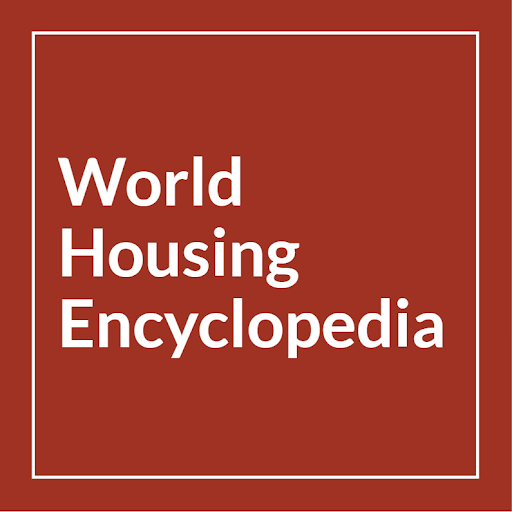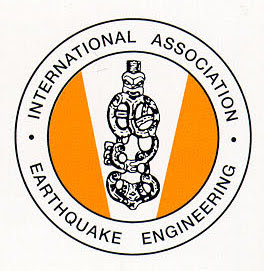reports:report_2
Differences
This shows you the differences between two versions of the page.
| Both sides previous revisionPrevious revisionNext revision | Previous revision | ||
| reports:report_2 [2021/02/18 19:58] – [Earthquakes] luisa | reports:report_2 [2025/04/29 15:16] (current) – external edit 127.0.0.1 | ||
|---|---|---|---|
| Line 2: | Line 2: | ||
| === From World Housing Encyclopedia === | === From World Housing Encyclopedia === | ||
| - | + | {{ : | |
| - | {{ : | + | |
| ---- | ---- | ||
| - | ==== General Information ==== | + | ==== 1. General Information ==== |
| **Report:** 2 | **Report:** 2 | ||
| Line 37: | Line 36: | ||
| ---- | ---- | ||
| - | ==== Features ==== | + | ==== 2. Features ==== |
| - | {{gallery> | + | {{gallery>: |
| **Plan Shape:** Rectangular, | **Plan Shape:** Rectangular, | ||
| Line 81: | Line 80: | ||
| ---- | ---- | ||
| - | ==== Building Materials and Construction Process ==== | + | ==== 3. Building Materials and Construction Process ==== |
| - | * __**Description of Building Materials**__ | + | === Description of Building Materials |
| - | < | + | ^ Structural Element |
| - | < | + | | Wall/ |
| - | < | + | | Foundations |
| - | <th>Structural Element</ | + | | Floors | | | |
| - | <th>Building Material(s)</ | + | | Roof | Round logs with cane and mud roof |Round log d=16 cm, every 60 cm Roof maximum weight: 150 kg/ m2 | |
| - | <th>Comment(s)</ | + | | Other | | | |
| - | </ | + | |
| - | <tr> | + | |
| - | < | + | |
| - | <td>Wall: Adobe blocks/ Reinforced concrete Frame: Reinforced concrete</ | + | |
| - | <td>Wall- Characteristic Strength: 3 Kg/sq cm - 10 Kg/sq cm Mix Proportion/ | + | |
| - | </ | + | |
| - | < | + | |
| - | <td>Foundations</ | + | |
| - | <td>Concrete with stone</ | + | |
| - | <td>Characteristic Strength: 150 kg/ cm2 Mix Proportion/ | + | |
| - | | + | |
| - | <tr> | + | |
| - | < | + | |
| - | <td>Round logs with cane and mud roof</ | + | |
| - | <td>Round log d=16 cm, every 60 cm Roof maximum weight: 150 kg/ m2</td> | + | |
| - | | + | |
| - | </ | + | |
| - | </ | + | |
| + | ---- | ||
| - | * __**Design Process**__ | + | === Design Process |
| **Who is involved with the design process?** Other | **Who is involved with the design process?** Other | ||
| Line 117: | Line 99: | ||
| **Roles of those involved in the design process:** In the beginning, this type of construction was designed and built by engineers and general builders, but later the same construction began to be made by the owners. | **Roles of those involved in the design process:** In the beginning, this type of construction was designed and built by engineers and general builders, but later the same construction began to be made by the owners. | ||
| - | * __**Construction Process**__ | + | ---- |
| + | |||
| + | === Construction Process | ||
| **Who typically builds this construction type?** OwnerOther | **Who typically builds this construction type?** OwnerOther | ||
| Line 126: | Line 110: | ||
| **Construction process and phasing:** The owner of the house usually carries out the construction. It begins with the manufacturing of adobe, the filling in of foundations and plinth construction. After that, the adobe block masonry is built, caring that the blocks are perfectly joined. Then, the frame of the top reinforcement concrete beam is made, and the iron bars are placed to fasten the round logs of the roof. The frame is filled in with concrete. The round logs are placed and fastened every 60 cm. After that a 5cm-wide coat of cane and mud is placed. This coat is later made waterproof with asphalt, finishing the process with the placement of Spanish tiles. The tools and equipment typically used are: wheelbarrows, | **Construction process and phasing:** The owner of the house usually carries out the construction. It begins with the manufacturing of adobe, the filling in of foundations and plinth construction. After that, the adobe block masonry is built, caring that the blocks are perfectly joined. Then, the frame of the top reinforcement concrete beam is made, and the iron bars are placed to fasten the round logs of the roof. The frame is filled in with concrete. The round logs are placed and fastened every 60 cm. After that a 5cm-wide coat of cane and mud is placed. This coat is later made waterproof with asphalt, finishing the process with the placement of Spanish tiles. The tools and equipment typically used are: wheelbarrows, | ||
| + | ---- | ||
| - | * __**Building Codes and Standards**__ | + | === Building Codes and Standards |
| **Is this construction type address by codes/ | **Is this construction type address by codes/ | ||
| Line 134: | Line 119: | ||
| **Process for building code enforcement: | **Process for building code enforcement: | ||
| + | ---- | ||
| - | + | === Building Permits and Development Control Rules === | |
| - | * __**Building Permits and Development Control Rules**__ | + | |
| **Are building permits required?** Yes | **Are building permits required?** Yes | ||
| Line 145: | Line 130: | ||
| **Additional comments on building permits and development control rules:** This construction is subject to regulations and the approval of plans. | **Additional comments on building permits and development control rules:** This construction is subject to regulations and the approval of plans. | ||
| + | ---- | ||
| - | + | === Building Maintenance and Condition | |
| - | * __**Building Maintenance and Condition**__ | + | |
| **Who typically maintains buildings of this type?** Owner(s) | **Who typically maintains buildings of this type?** Owner(s) | ||
| **Additional comments on maintenance and building condition: | **Additional comments on maintenance and building condition: | ||
| + | ---- | ||
| - | + | === Construction Economics | |
| - | * __**Construction Economics**__ | + | |
| **Unit construction cost:** Unit construction cost per m2 of built-up area is approximately US$ 137. | **Unit construction cost:** Unit construction cost per m2 of built-up area is approximately US$ 137. | ||
| Line 162: | Line 147: | ||
| ---- | ---- | ||
| - | ==== Socio-Economic Issues ==== | + | ==== 4. Socio-Economic Issues ==== |
| **Patterns of occupancy: | **Patterns of occupancy: | ||
| Line 190: | Line 175: | ||
| ---- | ---- | ||
| - | ==== Earthquakes ==== | + | ==== 5. Earthquakes ==== |
| - | {{gallery> | + | {{gallery>: |
| + | |||
| + | ---- | ||
| **Past Earthquakes in the country which affected buildings of this type:** | **Past Earthquakes in the country which affected buildings of this type:** | ||
| - | < | + | ^ Year ^ Earthquake Epicenter |
| - | < | + | | 1977 | Caucete 100 km to the east of San Juan Capital |
| - | < | + | |
| - | <th>Year</ | + | |
| - | <th>Earthquake Epicenter</ | + | |
| - | <th>Richter Magnitude</ | + | |
| - | <th>Maximum Intensity</th> | + | |
| - | </ | + | |
| - | < | + | |
| - | <td>1977</ | + | |
| - | <td>Caucete 100 km to the east of San Juan Capital | + | |
| - | <td>7.4</ | + | |
| - | <td>IX MMI</ | + | |
| - | </ | + | |
| - | </ | + | |
| - | </ | + | |
| + | ---- | ||
| - | * __**Past Earthquakes**__ | + | === Past Earthquakes |
| **Damage patterns observed in past earthquakes for this construction type:** In general, during the 1977 earthquake, the adobe block construction built in Caucete using the standards of 1948, suffered moderate damage (economically repairable); | **Damage patterns observed in past earthquakes for this construction type:** In general, during the 1977 earthquake, the adobe block construction built in Caucete using the standards of 1948, suffered moderate damage (economically repairable); | ||
| **Additional comments on earthquake damage patterns:** In the Capital city of San Juan, located at approximately 100 km distance from the epicenter, the intensity was between VII MMI and VIII MMI . It is important to mention that a wide area of about 1000 km2 experienced liquefaction. | **Additional comments on earthquake damage patterns:** In the Capital city of San Juan, located at approximately 100 km distance from the epicenter, the intensity was between VII MMI and VIII MMI . It is important to mention that a wide area of about 1000 km2 experienced liquefaction. | ||
| + | ---- | ||
| - | * __**Structural and Architectural Features for Seismic Resistance**__ | + | === Structural and Architectural Features for Seismic Resistance |
| The main reference publication used in developing the statements used in this table is FEMA 310 “Handbook for the Seismic Evaluation of Buildings-A Pre-standard”, | The main reference publication used in developing the statements used in this table is FEMA 310 “Handbook for the Seismic Evaluation of Buildings-A Pre-standard”, | ||
| Line 226: | Line 201: | ||
| The total width of door and window openings in a wall is: For brick masonry construction in cement mortar : less than ½ of the distance between the adjacent cross walls; For adobe masonry, stone masonry and brick masonry in mud mortar: less than 1/3 of the distance between the adjacent cross walls; For precast concrete wall structures: less than 3/4 of the length of a perimeter wall. | The total width of door and window openings in a wall is: For brick masonry construction in cement mortar : less than ½ of the distance between the adjacent cross walls; For adobe masonry, stone masonry and brick masonry in mud mortar: less than 1/3 of the distance between the adjacent cross walls; For precast concrete wall structures: less than 3/4 of the length of a perimeter wall. | ||
| - | < | + | ^Structural/ |
| - | < | + | | Lateral load path | The structure contains a complete load path for seismic force effects from any horizontal direction that serves to transfer inertial forces from the building to the foundation. |
| - | < | + | | Building |
| - | <th>Feature</ | + | | Building Configuration-Horizontal | The building is regular with regards to the plan. (Specify in 5.4.2) |
| - | <th>Statement</ | + | | Roof Construction |
| - | <th>Seismic Resistance</ | + | | Floor Construction |
| - | </ | + | | Foundation Performance |
| - | <tr> | + | | Wall and Frame Structures-Redundancy | The number of lines of walls or frames in each principal direction is greater than or equal to 2. | TRUE | |
| - | < | + | | Wall Proportions |
| - | <td>The structure contains a complete load path for seismic force effects from any horizontal direction that serves to transfer inertial forces from the building to the foundation.</ | + | | Foundation-Wall Connection |
| - | <td>FALSE</td> | + | | Wall-Roof Connections |
| - | </ | + | | Wall Openings |
| - | < | + | | Quality of Building Materials |
| - | <td>Building | + | | Quality of Workmanship |
| - | <td>The building is regular with regards to the elevation. Specify in 5.4.1)</ | + | | Maintenance |
| - | <td>TRUE</ | + | |
| - | </ | + | |
| - | <tr> | + | |
| - | < | + | |
| - | <td>The building is regular with regards to the plan. (Specify | + | |
| - | in 5.4.2)</ | + | |
| - | <td>TRUE</td> | + | |
| - | </ | + | |
| - | < | + | |
| - | <td>Roof Construction</ | + | |
| - | <td>The roof diaphragm is considered to be rigid and it is expected that the roof structure will maintain its integrity, i.e. shape and form, during an earthquake of intensity expected in this | + | |
| - | area.</ | + | |
| - | <td>FALSE</ | + | |
| - | </ | + | |
| - | <tr> | + | |
| - | < | + | |
| - | <td>The floor diaphragm(s) are considered to be rigid and it | + | |
| - | is expected that the floor structure(s) will maintain its integrity during an earthquake of intensity expected in this area.</ | + | |
| - | <td>TRUE</td> | + | |
| - | </ | + | |
| - | < | + | |
| - | < | + | |
| - | < | + | |
| - | structure in an earthquake.</ | + | |
| - | < | + | |
| - | </ | + | |
| - | < | + | |
| - | < | + | |
| - | < | + | |
| - | direction is greater than or equal to 2.</ | + | |
| - | < | + | |
| - | </ | + | |
| - | <tr> | + | |
| - | <td>Wall Proportions</ | + | |
| - | < | + | |
| - | level is: Less than 25 (concrete walls); Less than 30 (reinforced masonry walls); Less than 13 (unreinforced masonry walls); | + | |
| - | < | + | |
| - | </ | + | |
| - | <tr> | + | |
| - | <td>Foundation-Wall Connection</ | + | |
| - | < | + | |
| - | < | + | |
| - | </ | + | |
| - | < | + | |
| - | < | + | |
| - | < | + | |
| - | < | + | |
| - | </ | + | |
| - | < | + | |
| - | < | + | |
| - | < | + | |
| - | < | + | |
| - | </ | + | |
| - | <tr> | + | |
| - | <td>Quality of Building Materials</ | + | |
| - | < | + | |
| - | < | + | |
| - | </ | + | |
| - | < | + | |
| - | < | + | |
| - | < | + | |
| - | standards).</ | + | |
| - | < | + | |
| - | </ | + | |
| - | < | + | |
| - | < | + | |
| - | < | + | |
| - | < | + | |
| - | </ | + | |
| - | </ | + | |
| - | </ | + | |
| - | * __**Building Irregularities**__ | + | ---- |
| + | |||
| + | === Building Irregularities | ||
| **Vertical irregularities typically found in this construction type:** Other | **Vertical irregularities typically found in this construction type:** Other | ||
| Line 325: | Line 231: | ||
| **Seismic deficiency in roof and floors:** The roof is flexible. | **Seismic deficiency in roof and floors:** The roof is flexible. | ||
| + | ---- | ||
| - | * __**Seismic Vulnerability Rating**__ | + | === Seismic Vulnerability Rating |
| For information about how seismic vulnerability ratings were selected see the {{ : | For information about how seismic vulnerability ratings were selected see the {{ : | ||
| - | < | + | | |
| - | < | + | | | A | B | C | D | E | F | |
| - | < | + | | Seismic vulnerability class | %%|-%% | o | %%-|%% | |
| - | < | + | |
| - | <th colspan=" | + | ---- |
| - | <th colspan=" | + | |
| - | <th colspan=" | + | ==== 6. Retrofit Information ==== |
| - | | + | |
| - | | + | **Description of Seismic Strengthening Provisions** |
| - | < | + | |
| - | < | + | ^ Structural Deficiency ^ Seismic Strengthening ^ |
| - | < | + | | Additional comments on seismic strengthening provisions | This type of construction has emerged as a proposal to strengthen the traditional adobe block construction which had an unsatisfactory performance during the 1944 earthquake. This construction has been built in San Juan under the Adobe Construction Regulations of 1948, however it is only allowed in rural areas. During the 1977 Caucete earthquake, this construction has a satisfactory performance so no seismic strengthening has been done since that time. It should be noted that some traditional adobe construction (not following the 1948 Regulations) is still being practiced in rural areas. | |
| - | < | + | |
| - | < | + | ---- |
| - | < | + | |
| - | < | + | ==== 7. References ==== |
| - | | + | |
| - | | + | |
| - | < | + | |
| - | < | + | |
| - | < | + | |
| - | < | + | * Adobe Block Housing in Dry Areas Hugo Giuliani and Jose Herrera Cano |
| - | < | + | |
| - | < | + | * 1991 National Survey on Population and Housing (INDEC) N18 |
| - | < | + | |
| - | </ | + | * Inter-relations Between Architectural Design and Structural Design in High Seismic |
| - | </ | + | |
| - | </ | + | === Authors === |
| + | |||
| + | ^ Name ^ Title ^ Affiliation ^ Location ^ | ||
| + | | Virginia I Rodriguez | Architect | Professor-Researcher | B# UDAP III M.EMblock 1 Piso 1# 5425 San Juan-Argentina | | ||
| + | | Maria I Yacante | Architect | Researcher | Av. Libertador 1068 (s) 5400 San Juan-Argentina | | ||
| + | | Sergio Reiloba | Architect | Researcher | 5400 San Juan - Argentina | ||
| + | |||
| + | === Reviewers === | ||
| + | |||
| + | ^ Name ^ Title ^ Affiliation ^ Location ^ | ||
| + | | Sergio Alcocer | Director of Research | Circuito Escolar Cuidad Universitaria, | ||
reports/report_2.1613678315.txt.gz · Last modified: 2025/04/29 15:16 (external edit)



